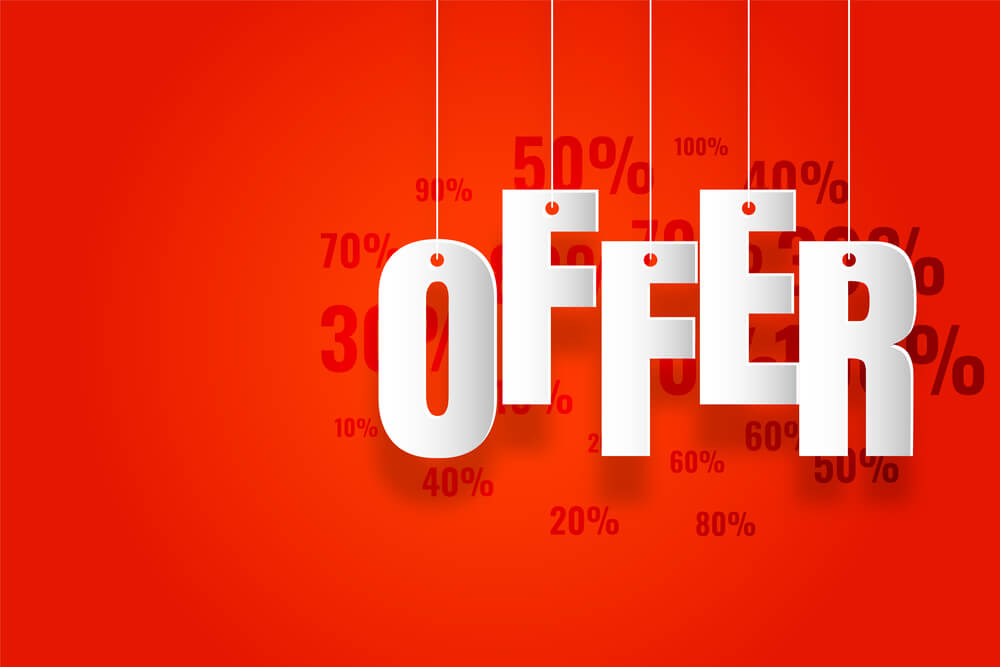Looking to set the perfect price for your tours? Want to strike the right balance between attracting customers and covering costs? You’re not alone. Finding the right pricing tactics for your local guided tour business can be tough, but it’s a challenge you can’t afford to ignore.
With competitors everywhere, the wrong price can mean lost customers, shrinking revenue, and falling behind. Well, it’s tough, but there’s a solution!
This blog is here to help. Packed with practical tips and proven tour pricing strategies, we’ll show you how to attract customers, boost your profits, and stay ahead of the competition. Ready to take control of your pricing? Let’s get started!
Key Takeaways
- Understand both direct and indirect costs to set a breakeven price.
- Research local competitors to ensure competitive positioning.
- Adjust pricing based on demand to boost your earnings.
- Add tiered pricing to appeal to customers with different budgets.
- Offer upsells or add-ons to enhance the experience and increase revenue.
- Keep promotions limited to create urgency, like Early Bird discounts.
- Regularly re-evaluate prices with customer feedback and analytics tools.
Understanding Your Costs and Margins

Image Credit: Image by master1305 on Freepik
Before you can set smart tour prices, you need to know your numbers inside and out. Many tour operators fall into the trap of underpricing simply because they overlook some key costs. But pricing isn’t just about breaking even; it’s about building a thriving, profitable business that values your hard work and expertise.
Break Down Your Costs:
If you’re starting a local tour guide business, it’s crucial to set prices that cover costs while attracting customers. Let’s get into the details; you may be surprised by what you’re missing!
- Fixed Costs: These are your “always-there” expenses, no matter how many tours you run. Think licenses, permits, insurance, and marketing. For example, maintaining your website or paying for liability insurance are costs you’ll need to cover consistently, tour after tour.
- Variable Costs: These shifts depend on the size or specifics of your tour. Transportation, snacks, entrance fees, or equipment rentals are all part of the mix. A tour with 10 people will naturally cost more than one with just 5. Don’t forget to account for every little detail!
- Your Time: This one’s big. You work hard; so pay yourself fairly. Whether you’re leading tours, managing bookings, or answering customer inquiries, your time is one of your most valuable resources. Think about what your time is worth per hour, and include it in your pricing.
Related post for you: Ideas to Attract Solo Travelers to Your Local Guided Tours
Once you’ve nailed down your costs, it’s time to work out your profit margin. A quick example? Let’s say the total cost of running your tour (fixed + variable costs) is $150. If you want to achieve a 40% profit margin, this is how you calculate your pricing:
Tour Price = Total Costs + (Total Costs x Desired Profit Margin)
Tour Price = $150 + (150 x 0.4) = $210.
Here, charging $210 per customer ensures you cover all your expenses while making a healthy profit.
Great pricing is all about balance: covering costs, valuing your expertise, and ensuring your business thrives while delivering exceptional experiences. Don’t undervalue yourself; your hard work deserves to be rewarded, and your customers will notice the difference.
Pro Tip: To make pricing even easier, use tools like cost calculator apps. They quickly estimate your expenses and profit margins, saving you time and ensuring your prices are accurate and competitive.
Researching Competitor Pricing

Image Credit: Image by freepik
Competitor research isn’t about copying; it’s about staying ahead. By analyzing what others are doing, you can refine your offerings, spot opportunities, and stand out. For example, how do your tour packages compare in price, value, or extras? Ask the right questions to carve out and own your space.
Ready to Research Like a Pro? Here’s How:
- Explore the Online World: Start with competitor websites. Check out their pricing, itineraries, and customer reviews. Then dive deeper—booking platforms and review sites like TripAdvisor are treasure troves of insights. What do customers rave about? What frustrates them? Spotting these trends will help you address gaps and stand out.
- Go Undercover: If you can, book a competitor’s tour and experience it for yourself. Look at everything, from the booking process to communication and the tour itself. What do they nail? Where do they fall short? Use this intel to create a blueprint for a better, standout experience your customers will love.
- Showcase Your Superpowers: So, what makes you special? Is it your local guides with unmatched insider knowledge or your premium, personalized touches? Whatever it is, make sure it shines through in every aspect of your service. Use what sets you apart to attract attention.
Stay informed, focus on what you do best, and create amazing experiences—it’s the best way to stand out and truly connect with your ideal customers.
Dynamic Pricing Strategies
Dynamic pricing, also known as flexible pricing, is a game-changing strategy that lets you adjust prices in real time based on demand, availability, and market trends.
Imagine maximizing revenue during peak demand while attracting more customers with smart discounts during slower periods. It’s a proven method; just look at how hotels and airlines have thrived using it for years.
For tour operators, adopting dynamic pricing isn’t just an option; it’s the key to staying competitive and boosting profits. Ready to transform your pricing strategy?
Here’s how to implement it:
- Peak Pricing: Increase prices during high-demand seasons, such as summer, holidays, or weekends when more customers are likely to book. This helps you capitalize on periods where demand exceeds supply.
- Off-Peak Discounts: Offer lower prices during quieter times, like weekdays or the off-season, to attract budget-conscious customers and encourage bookings during slower periods. This can help maintain a steady stream of revenue year-round.
- Day-Of Pricing: If a tour isn’t fully booked on the day it’s scheduled, sell the remaining spots at a discounted rate. This strategy ensures you fill as many seats as possible and avoid missing out on revenue from unsold inventory.
Pro Tip: Take advantage of pricing tools specifically designed for tour businesses like RentMy Tours. Stay competitive by optimizing prices based on demand patterns while focusing on delivering exceptional customer experiences.
Offering Tiered Pricing Options

Image Credit: Image by freepik
Not all customers want the same experience—so why stick to a one-size-fits-all pricing model? Enter tiered pricing: a smarter way to cater to different needs, preferences, and budgets. When you offer multiple options, you give your customers the freedom to choose what fits them best while boosting your revenue.
Here’s how it works:
- Basic Tier: Keep it simple with a guided tour. Perfect for budget-savvy adventurers who want the essentials—no extras, no fuss, just the experience.
- Premium Tier: Step it up with snacks, beverages, and complimentary photography. Elevate the experience with extras like private pickup or exclusive access to special areas. Awesome for anyone craving added comfort and convenience!
- VIP Tier: The ultimate in luxury. Think private guides, customized itineraries, and first-class perks like luxury transportation. Ideal for customers who want a truly unforgettable, tailor-made experience.
Tiered pricing helps you reach a wider audience while giving people the flexibility to choose what works best for them. It’s a win-win—happy customers and a growing business. What’s not to love?
Incorporating Upsells and Add-Ons

Image Credit: Image by stockking on Freepik
Did you know it costs 5-25 times more to get a new customer than to keep an existing one?
Upselling strategically not only boosts your revenue but also enhances the overall customer experience when done right. By offering thoughtful add-ons that complement their purchase, you’re not just selling, you’re adding value.
Here’s how to upsell like a pro:
- Upgrade the experience: Have you ever considered offering premium options? Think private group tours, extended adventures, or exclusive VIP access. These upgrades allow your customers to customize their experience and feel like a star.
- Add irresistible extras: Who doesn’t love extras? Offer add-ons like professional photo packages, fun souvenir kits, or even gourmet meals. These little touches turn an ordinary experience into unforgettable memories.
- Partner up for bundles: Team up with local businesses to create bundles—restaurant vouchers, spa packages, or discounts at nearby attractions. It’s a win for your customers, your partners, and your business.
A simple $15 souvenir photo package, which costs just $5 to create, can add a special touch to your tour. It’s a thoughtful gesture that brings a smile to your customers’ faces while also helping to support your business.
The key is to make upselling feel natural. When integrated smoothly into the booking process, it doesn’t feel like a sales push—it feels like a thoughtful suggestion. The right tools let you offer upsells, track inventory, and create a seamless customer journey. Best of all, you boost revenue effortlessly.
Using Limited-Time Discounts and Promotions

Image Credit: Image by starline on Freepik
Nothing gets people moving like a limited-time deal! Promotions are a proven way to turn “maybe later” into “booked right now.” By offering irresistible discounts, you can tap into that urgency and watch your guided tour bookings soar.
Here are some creative ways to use promotions for your guided tours:
- Seasonal Discounts: Got a few empty seats during the quieter months? Offer special rates for weekdays or off-peak seasons and watch budget-savvy travelers snag the deal. Not only does this fill up your tours, but it also keeps things lively even when business slows down.
- Referral Discounts: Turn your happiest customers into your biggest cheerleaders! Give them a reason to spread the word by offering discounts when they refer friends or family. They save, you grow your audience, and everyone gets to share an epic adventure!
- Flash Sales: Nothing screams excitement like a quick, limited-time offer. A flash sale lasting 24 or 48 hours generates excitement, creates a sense of urgency, and leads to immediate bookings. These deals push customers to act fast—and they can’t resist the fear of missing out!
Once you’ve cooked up these enticing deals, make sure your audience knows about them. Promote it through your website, social media, and email blasts. Use bold visuals, countdown timers, and clear calls to action to grab attention and keep your tours top-of-mind.
Regularly Evaluating and Adjusting Prices

Image Credit: Image by dayalguru on Freepik
Pricing is not a set-it-and-forget-it task; it requires constant attention and is a dynamic aspect of your business. The most successful businesses know that to stay competitive, they must regularly adjust their pricing strategies.
Why? Pricing isn’t just about slapping a number on your products or services; it’s about staying profitable, competitive, and attractive to your customers over the long term.
Steps to Regularly Adjust Prices:
- Audit your costs every quarter: Costs change, supplier fees go up, new expenses pop up, and overheads can creep. By reviewing your expenses every quarter, you can adjust your prices to reflect reality and protect your profit margins.
- Update dynamic pricing based on seasonal trends: Take advantage of seasonal highs and lows. Charge higher prices during busy periods and offer promotions during quieter times to maximize revenue without scaring off your customers. A touch of adaptability can work wonders!
- Monitor competitors to stay competitive: Understanding competitor pricing can significantly impact your business. Knowing what others charge allows you to find the right balance, remaining competitive while achieving a healthy profit.
Smart pricing involves strategic thinking, not just calculations. Stay flexible, remain competitive, and watch your business thrive!
Simplify Your Pricing Process for Maximum Profits
At this point, it’s clear that pricing strategies can feel overwhelming. Calculating margins, offering tiers, and adjusting rates, all while running your business can be a challenging task.
That’s where RentMy Tours comes in.
RentMy Tours is built for local guided tour operators who want to spend less time on the admin and more time creating unforgettable experiences. With easy-to-use tools, you can adjust pricing on the go, add upsells effortlessly, and simplify bookings—all so you can focus on what matters most: your customers.
Conclusion
Well, that’s it! In this blog, we’ve explored pricing tactics for your local guided tour business to help you grow sustainably.
Smart pricing is more than just a number on your website; it’s a strategic lever you can pull to maximize revenue, attract customers, and stay ahead of the competition.
Start with clear margins. Study your competition. Experiment with advanced strategies like dynamic pricing and upselling. Use tools like RentMy Tours to automate and simplify. Nothing should stand between you and the sustainable growth of your tour business.
Now it’s your turn; take these tactics, apply them, and watch your tour guide business thrive.
FAQs
How Do I Handle Discounts Without Devaluing My Tours?
Offer discounts with a clear purpose, like for early bookings or group rates, and highlight the value of what you provide. Make sure your original prices show the quality of your service, so discounts feel special and not like you’re undervaluing your work.
How Can I Compete With Free or Low-Cost Alternatives?
Focus on what makes your tours special, like exclusive access, expert guides, or great customer service. Show why you’re different and add extras to create an experience your competitors can’t match.
What Should I Consider When Setting Seasonal Prices?
Set seasonal prices based on peak travel times, local events, and weather. Increase prices when demand is high and lower them during off-seasons to attract more bookings while staying competitive with the market.
What Is Smart Pricing?
Smart pricing is a strategy that adjusts product prices based on demand, competition, and market trends. It helps maximize revenue by increasing prices during peak times and offering discounts during slow periods. Common methods include tiered pricing, upsells, and dynamic pricing to stay competitive.









